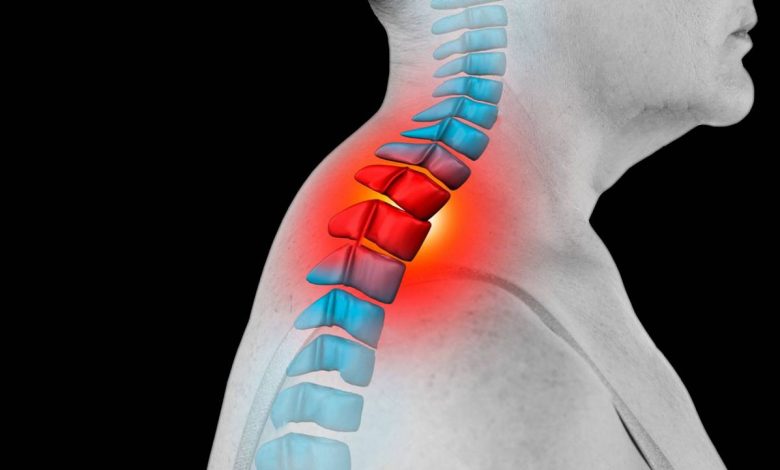Buffalo hump, widow's hump, dorsocervical fat layer: what is this, causes, symptoms, diagnostics, treatment, prevention

Hump on upper back (dorsocervical fat pad); Buffalo hump; Dorsocervical fat pad
What is dorsocervical adipose tissue?
Dorsocervical fat layer, also known as buffalo hump, widow's hump or cervical lipodystrophy, is a disease, characterized by the accumulation of excess fat in the neck and upper back. This condition is usually associated with people, who suffer from such conditions, like Cushing's syndrome, endocrine disorder, caused by excessive production of cortisol. In this article, we will discuss the reasons, symptoms, diagnostics, treatment and prevention of dorsocervical fat body.
Causes of dorsocervical fat accumulation
The main cause of dorsocervical fat pad is excessive production of cortisol., hormone, produced by the adrenal glands, which helps regulate the body's response to stress. This excess production of cortisol can be the result of a variety of factors., including:
- Cushing's syndrome: is an endocrine disease, caused by overproduction of cortisol. Excess cortisol leads to fat accumulation in the neck and upper back.
- Medicines: some medicines, such as glucocorticoids, can lead to excessive production of cortisol and the development of dorsocervical fat pad.
- Obesity: people, obese, more likely to develop dorsocervical fat as a result of excess fat, stored in their body.
Dorsocervical adipose tissue symptoms
Dorsocervical fat pad symptoms include:
- Accumulation of excess fat in the neck and upper back
- Hump-shaped appearance in the neck and upper back
- Stiffness and discomfort in the neck and upper back
- Difficulty breathing due to pressure on the airways
When to contact a healthcare professional
It is important to see a doctor, if you experience any symptoms of dorsocervical fat pad. A healthcare professional can help determine the underlying cause of the condition and prescribe appropriate treatment..
Questions, that your doctor may ask
Your doctor may ask the following questions, to determine the cause of your symptoms:
- When did you first notice the accumulation of fat in the neck and upper back??
- Have you taken any medications?
- Do you have a history of Cushing's syndrome or other endocrine disorders?
- Have you experienced any other symptoms, such as fatigue, weakness or weight gain?
Diagnosis of dorsocervical adipose tissue
Diagnosis of dorsocervical fat pad is based on physical examination., collection of anamnesis and laboratory tests. Physical examination may include a thorough evaluation of the neck and upper back, to determine the degree of fat accumulation. Lab tests may include blood tests to measure levels of cortisol and other hormones.
Treatment of dorsocervical adipose tissue
Treatment of dorsocervical fat pad depends on the underlying cause of the disease. For people with Cushing's syndrome, treatment may include medications to lower cortisol levels., as well as surgery to remove the adrenal glands. For people, in whom the dorsocervical fat pad has developed as a result of medication, treatment may include switching to alternative medications.
Home treatment for dorsocervical adipose tissue
There are several home remedies, which may help reduce symptoms of dorsocervical adipose tissue. These include:
- Maintaining a Healthy Diet. Dieting, rich in fruits, vegetables and whole grains, may help reduce body fat accumulation.
- Exercises: Regular physical activity, such as walking or jogging, can help reduce fat, stored in the body, and improve overall health.
- Stress Management. Managing stress with these activities, like yoga or meditation, may help regulate cortisol levels and reduce the risk of developing dorsocervical fat pad.
- good posture: maintaining good posture can help relieve pressure on the neck and upper back, reducing the risk of developing dorsocervical fat pad.
Prevention of dorsocervical fat pad
The best way to prevent dorsocervical fat pad is to lead a healthy lifestyle.. It includes:
- Follow a healthy diet: low sugar diet, saturated fat and processed foods may help prevent body fat accumulation.
- Regular exercise: Regular physical activity can help reduce the risk of developing dorsocervical fat and improve overall health..
- Stress Management. Managing stress with these activities, like yoga or meditation, may help regulate cortisol levels and reduce the risk of developing dorsocervical fat pad.
- Withdrawal from certain medications: Withdrawal from medication, which can lead to excessive production of cortisol, may reduce the risk of developing dorsocervical fat pad.
In conclusion, dorsocervical fat layer is a disease, characterized by the accumulation of excess fat in the neck and upper back.
This condition can be caused by various factors., including Cushing's syndrome, medication and obesity.
Treatment for dorsocervical fat pad depends on the underlying cause and may include medication, surgery and lifestyle changes.
Maintaining a healthy lifestyle and avoiding certain risk factors, people may reduce their risk of developing dorsocervical fat pad.
Used sources and literature
so sh, Tang MBY, Tey HL. Lipodystrophies. In: Bolognia JL, Schaffer JV, Cerroni L, eds. Dermatology. 4th ed. Philadelphia, PA: Elsevier; 2018:chap 101.
Tsoukis MA, CS Mantzoros. Lypodystrophy syndromes. In: Jameson JL, The Great LJ, the Circles DM, et al, eds. Endocrinology: Adult and Pediatric. 7th ed. Philadelphia, PA: Elsevier Saunders; 2016:chap 37.
